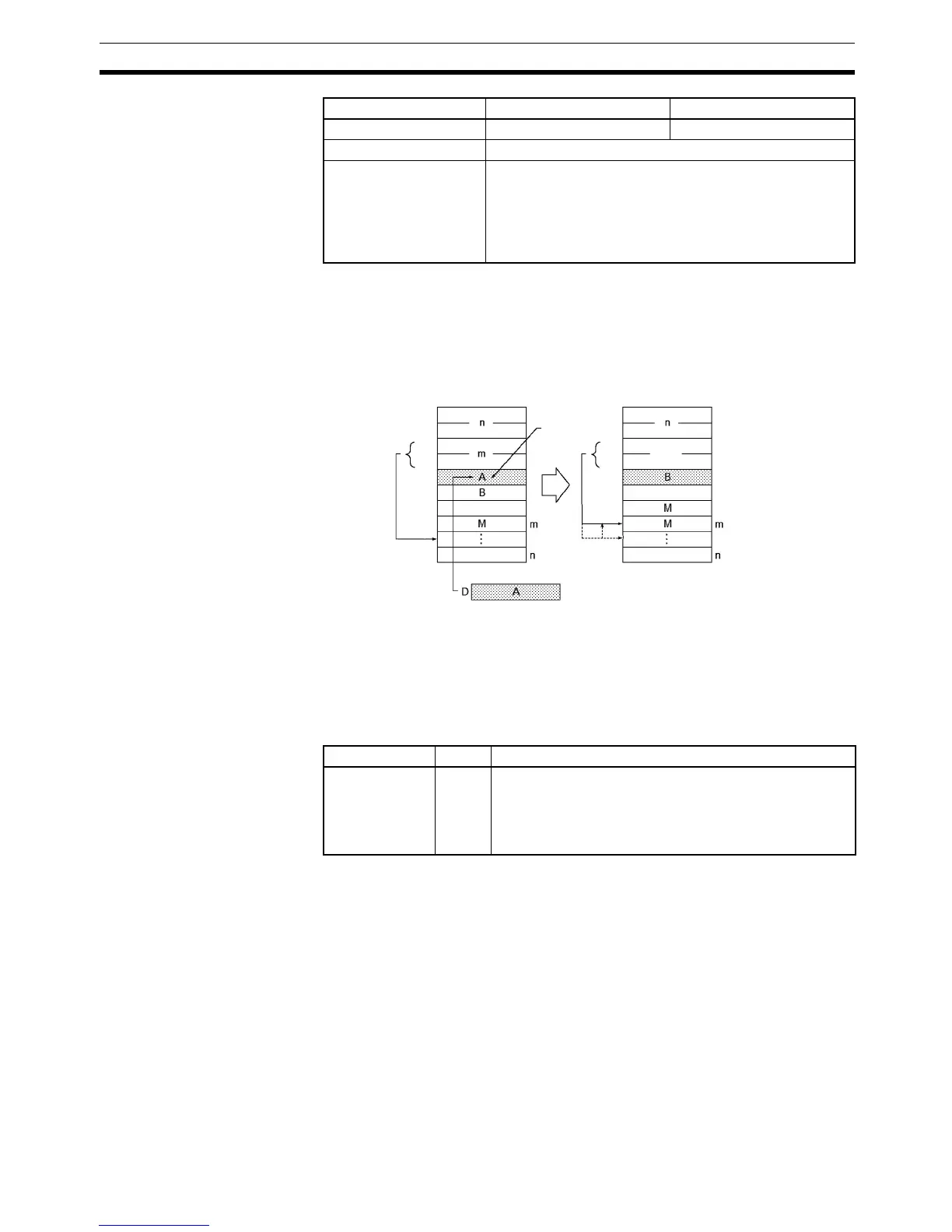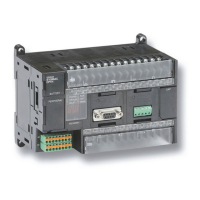711
Table Data Processing Instructions Section 3-17
Description FIFO(633) reads the oldest word of data from the stack (TB+4) and outputs
that data to D. Next, the stack pointer (TB+3 and TB+2) is decremented by
one, all of the remaining data in the stack is shifted downward by one word,
and the data read from TB+4 is deleted. The data at the end of the stack (the
address that was indicated by the stack pointer) is left unchanged.
Use FIFO(633) in combination with PUSH(632). After PUSH(632) has been
used to write data into a stack, FIFO(633) can be used to read data from the
stack on a first-in first-out basis.
FIFO(633) reads the beginning data from the stack and deletes this data to
move the next one forward.
Flags
Precautions The stack must be defined in advance with SSET(630).
Data Registers --- DR0 to DR15
Index Registers ---
Indirect addressing
using Index Registers
,IR0 to ,IR15
–2048 to +2047 ,IR0 to –2048 to +2047 ,IR15
DR0 to DR15, IR0 to IR15
,IR0+(++) to ,IR15+(++)
,–(– –)IR0 to, –(– –)IR15
Area TB D
m–1
TB
TB+1
TB+2
TB+3
TB
TB+1
TB+2
TB+3
TB+4
TB+4
m–1
PC memory
address
Oldest
data
Stack
pointer
PC memory
address
First-in first-out
Stack
pointer
Name Label Operation
Error Flag ER ON if the contents of the stack pointer (TB+3 and TB+2) is
less than or equal to the PLC memory address of first
word in the data region of the stack (TB+4).
(This is a stack underflow error.)
OFF in all other cases.

